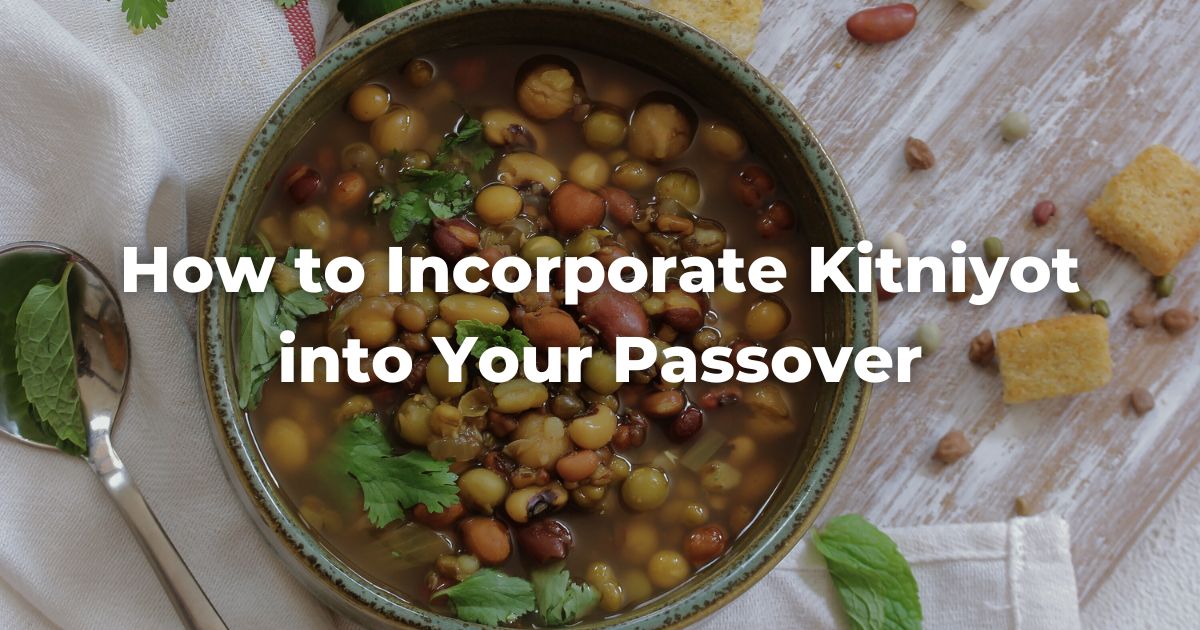This piece is part of Exploring Judaism’s 5784 Passover Reader. Download the whole reader here.
Being Sephardi in an Ashkenazi world, especially on Passover
When I moved from Montreal, Canada to the United States, I was happy to be a passive participant and guest at someone else’s Passover Seder. I quickly realized that many of the traditional dishes I grew up with in my Sephardic household (kofte de prassa or yaprekas) would not be served in a typical American Passover celebration. I sometimes felt like I was “cheating” by including rice or corn in my holiday observance.
I settled in the U.S., married, had children, and chose a Jewish day school to send them to in our small North Carolina town. My kids enjoyed celebrating holidays with their classmates and especially loved the school-wide Seder, where they feasted on matzah ball soup, and charoset made with apples and walnuts. Humm, apples? In charoset? Where are the dates and raisins, the way my mother always prepared it?
When my oldest kids were in kindergarten, our first night Seder plans fell through, and I was tasked with hosting our family’s Seder. I planned my menus, and my kids shrieked that they were excited about matzah ball soup. Wait, matzah ball soup? I’ve never tasted it, let alone made it! To my kids, Passover means brisket, mac’ n’ cheese farfel, spinach Mina, and jeweled rice. Over time, I have grown accustomed to making Ashkenazi dishes while staying true to my Sephardic identity and foodways. Matzah ball soup is still an acquired taste, but I serve it side by side with Harira, a Moroccan lentil and chickpea soup.
Are you kitniyot curious? Read on!
When planning our Passover seder menu (and, if you’re organized, your meals for the week), most of us are either team kitniyot or not. We often prepare favorite or customary childhood foods or need to include dishes we think of as must-have Passover foods (I’m looking at you, gefilte fish). Many Ashkenazi Jews abstain from kitniyot and consider their Sephardi friends the “lucky ones,” however, the Conservative movement removed the prohibition against consuming kitniyot in 2015. Nonetheless, it is not uncommon for Ashkenazi Jews to avoid kitniyot during Passover.
(See more: What are Kitniyot and when can I eat it?: On the 2015 Kitniyot Ruling)
So what are kitniyot?
They are a category of foods that include legumes (think lentils), pulses (most pea-related items such as chickpeas, soybeans, peanuts), seeds (sesame or poppy), and grains (corn, rice, buckwheat, to name a few).
Traditionally, these foods are strictly avoided to ensure you don’t mistakenly consume hametz (foods containing wheat, grains that can leaven, and all their derivatives). While kitniyot have been approved for use during Passover, why are many of us scared to include these foods in our seder and meals?
First, it might be hard to change our mindset around foods that were once considered “forbidden.” If you’re reading this, consider it your permission to snack on hummus and carrots during the Seder (no one said you can’t nosh while reading the Haggadah) or to reach for popcorn as an easy Passover treat.
Second, if your family hasn’t regularly featured kitniyot during Passover, you might be confused about what to include and, more importantly, how to prepare it.
Lastly, sometimes, feeling comfortable with the consumption of kitniyot has much to do with what other people might think, especially in public and communal spaces. In many families, “keeping Passover” is an integral part of religious observance and Jewish identity, and the suggestion that you might be transgressing the halachic rules and conventions of the holiday is hard to shake.
At the outset, contact your rabbi or rabbinic authority to clarify whether a food item is permissible. Most “Kosher for Passover” foods in your local or Kosher grocery store will not contain kitniyot, so you must make informed choices and read the nutrition labels. The easiest way to incorporate kitniyot in your Passover rotation is to stick to single-ingredient items such as rice, corn, and kasha (buckwheat), as well as condiments like tamari sauce and spreads like natural peanut butter.
(See more: Pesach guide for more specific information.)
Incorporating kitniyot in your Passover meals can enrich your Seder and celebrations and expand the variety of dishes you embrace.
This year, consider placing some hummus or baba ghanouj as dips on your Seder table. In addition to your potato kugel, why not try a basmati rice dish topped with fried onions and toasted pine nuts? Do you love kasha? Why not add a cup of cooked buckwheat to your favorite chopped vegetable salad? My favorite easy snack is to place ¼ cup of dried corn kernels in a paper bag and cook on HIGH in the microwave for 3 minutes (or until you hear the popping stop). You can eat it plain or add Kosher for Passover seasonings like onion salt.
Every Passover, I make my grandmother’s lentils for the second night of Seder, and there are always leftovers to munch on during the week. My favorite part of these lentils is they can be eaten on their own, with rice, or repurposed as the base in vegan shepherd’s pie. Give it a try!
Rosy’s Passover Lentils
Ingredients:
- 1 1/2 cups dry lentils, preferably black or green (French lentils are my favorite)
- Two medium white onions
- 4 TBS olive oil
- One can tomato sauce, 15 oz.
- Optional: 2 vegetable-based, Kosher-for-Passover, bouillon cubes
- 2 ½ cups water
Instructions:
- In a food processor, crush onions until totally liquified.
- Add onions and fry lightly in olive oil in a large saucepan until onions develop a
slightly golden color and are softened. - Add lentils.
- Add bouillon cubes, if using.
- Add one can of tomato sauce.
- Add salt and pepper to taste.
- Add water and stir.
- Cover the saucepan with a tight-fitting lid and let it simmer under low heat for
approximately 1 hour. - Check for consistency and taste, and add water if lentils are not fully cooked and
water has evaporated.
*If you have an Instapot, preheat it on the Sauté setting and fry the onion until it is soft and lightly golden (3-4 minutes). Close the lid and change the setting to pressure cook on HIGH for 14 minutes. Naturally, let the pressure release, check the vent, and open the lid.
Serve warm on its own or with rice. Makes great leftovers!
Author
-

Nathalie Ross is a doctoral candidate and teaching fellow focusing on food history, Jewish history, and women and gender. Her dissertation is a historical narrative about Sephardic American cookbooks and examines how food, recipes, and cookbooks narrate Jewish history and identity in the 20th century. In addition, Ms. Ross is an experienced Holocaust and Genocide scholar with a particular interest in the Jews of Greece. She has written extensively about the Holocaust in Greece, as well as mikveh practices during the Holocaust. Ms. Ross was born and raised in Montreal, Canada, and resides in Dallas with her husband and three children.
View all posts






